Abstract
In a group of 400 nephrotic patients, both adults and children, the histological picture seen on renal biopsy, the selectivity of differential protein clearances, and the response to corticosteroid therapy where applied were studied. The only discernible difference was that of the relative incidence of underlying renal disease; in particular, the much greater incidence of “minimal change” lesions and the near absence of glomerular disease secondary to systemic disorders in children. Highly selective differential protein clearances were strongly associated with response to steroids within eight weeks, and this depended on the relation between this type of protein clearance and the minimal change lesion, which was the only histological appearance associated with complete response to corticosteroid therapy within eight weeks. Neither renal biopsy nor studies of proteinuria allowed prediction of which responding patients would subsequently relapse.
Studies of differential protein clearances allow the paediatrician to avoid renal biopsy with safety in nephrotic children aged 1 to 5 years, but cannot distinguish any given renal disease with certainty. Generalized diseases affecting the kidney are usually associated with poorly selective differential protein clearances. Within all groups the most severe changes were usually associated with the least selective differential protein clearances, and vice versa.
Full text
PDF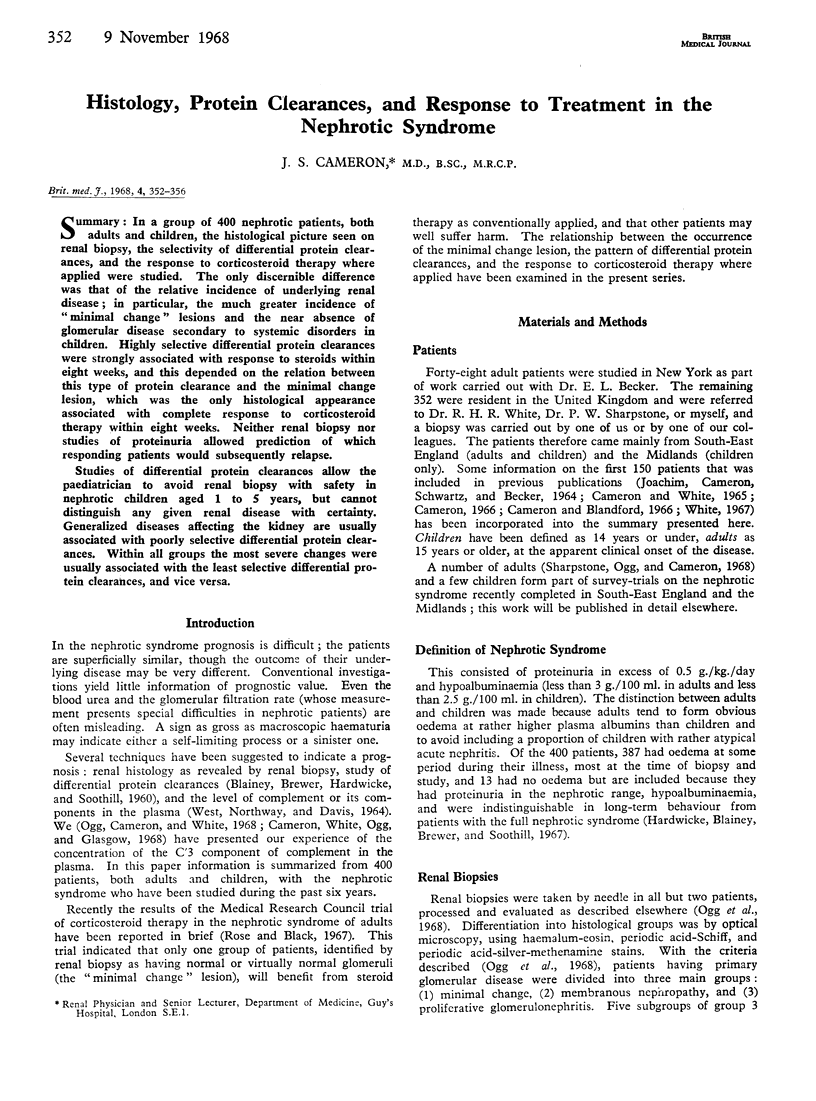
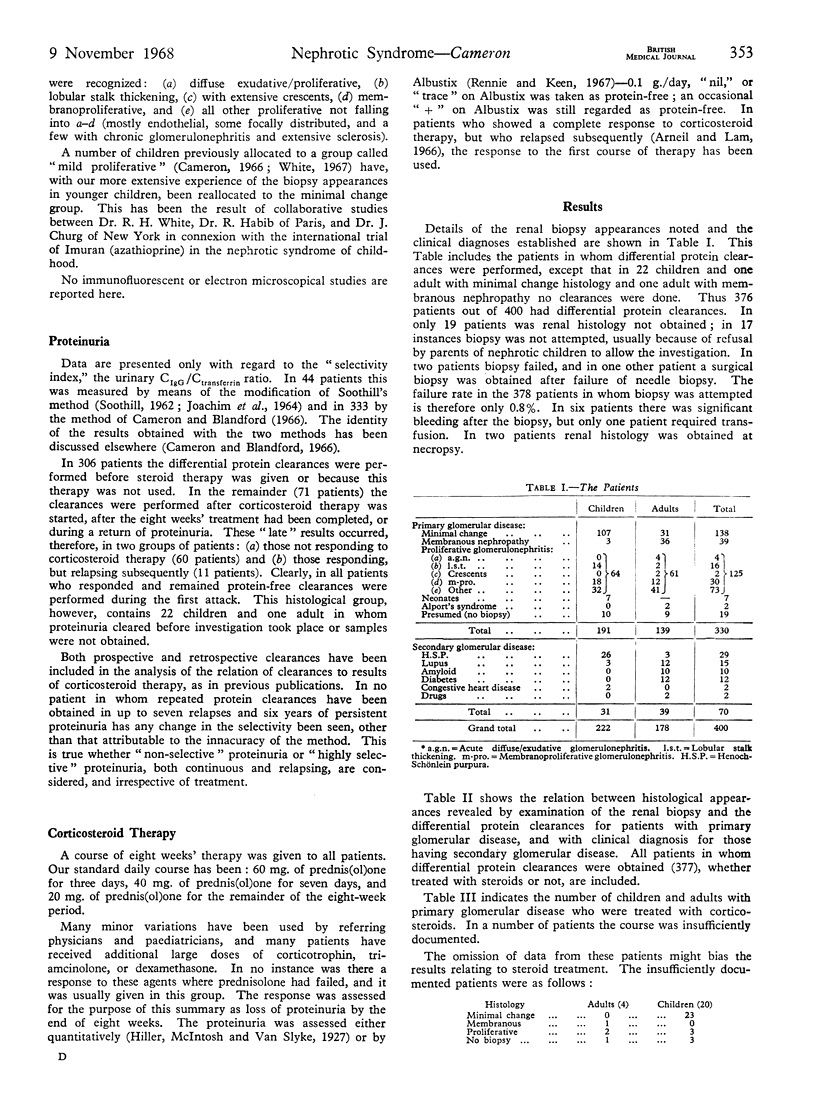
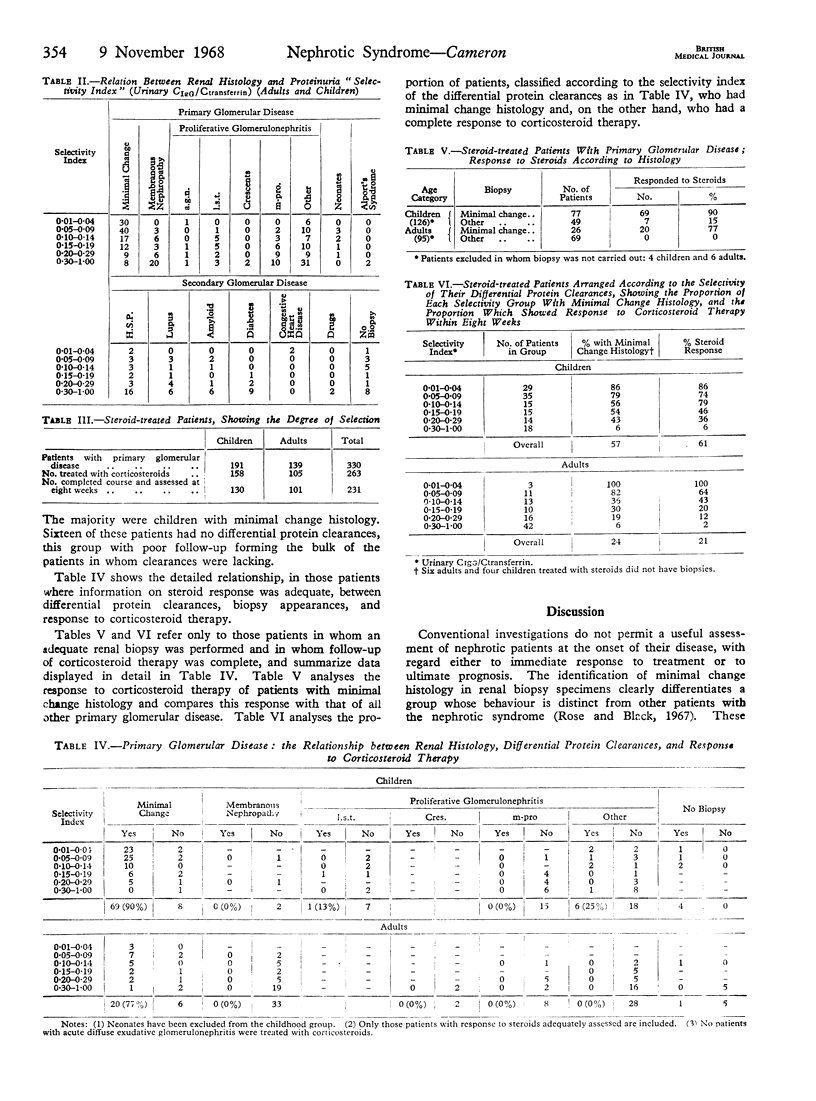
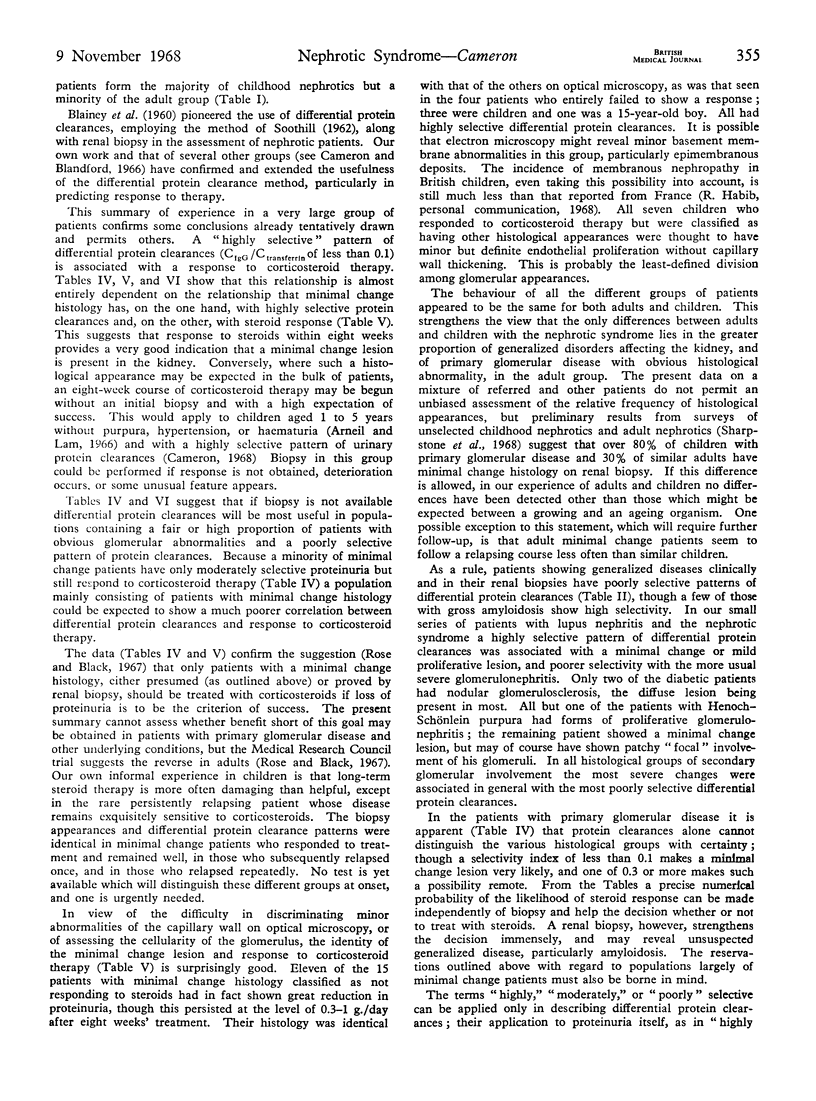
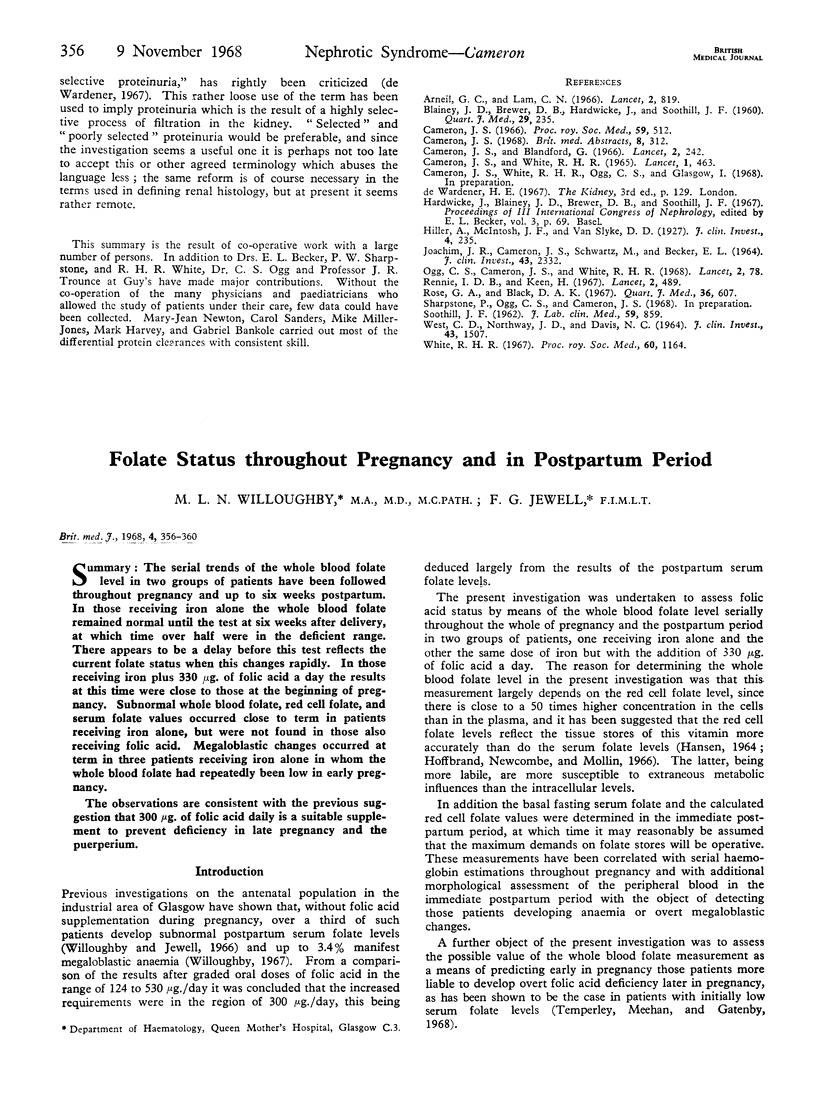
Selected References
These references are in PubMed. This may not be the complete list of references from this article.
- Arneil G. C., Lam C. N. Long-term assessment of steroid therapy in childhood nephrosis. Lancet. 1966 Oct 15;2(7468):819–821. doi: 10.1016/s0140-6736(66)92253-7. [DOI] [PubMed] [Google Scholar]
- BLAINEY J. D., BREWER D. B., HARDWICKE J., SOOTHILL J. F. The nephrotic syndrome. Diagnosis by renal biopsy and biochemical and immunological analyses related to the response to steroid therapy. Q J Med. 1960 Apr;29:235–256. [PubMed] [Google Scholar]
- CAMERON J. S., WHITE R. H. SELECTIVITY OF PROTEINURIA IN CHILDREN WITH THE NEPHROTIC SYNDROME. Lancet. 1965 Feb 27;1(7383):463–465. doi: 10.1016/s0140-6736(65)91593-x. [DOI] [PubMed] [Google Scholar]
- Cameron J. S., Blandford G. The simple assessment of selectivity in heavy proteinuria. Lancet. 1966 Jul 30;2(7457):242–247. doi: 10.1016/s0140-6736(66)92539-6. [DOI] [PubMed] [Google Scholar]
- Cameron J. S. The clinical significance of glomerular permeability studies. Proc R Soc Med. 1966 Jun;59(6):512–515. [PMC free article] [PubMed] [Google Scholar]
- Hiller A., McIntosh J. F., Van Slyke D. D. THE EXCRETION OF ALBUMIN AND GLOBULIN IN NEPHRITIS. J Clin Invest. 1927 Jun;4(2):235–251. doi: 10.1172/JCI100121. [DOI] [PMC free article] [PubMed] [Google Scholar]
- JOACHIM G. R., CAMERON J. S., SCHWARTZ M., BECKER E. L. SELECTIVITY OF PROTEIN EXCRETION IN PATIENTS WITH THE NEPHROTIC SYNDROME. J Clin Invest. 1964 Dec;43:2332–2346. doi: 10.1172/JCI105107. [DOI] [PMC free article] [PubMed] [Google Scholar]
- Rennie I. D., Keen H. Evaluation of clinical methods for detecting proteinuria. Lancet. 1967 Sep 2;2(7514):489–492. doi: 10.1016/s0140-6736(67)91656-x. [DOI] [PubMed] [Google Scholar]
- SOOTHILL J. F. Estimation of eight serum proteins by a gel diffusion precipitin technique. J Lab Clin Med. 1962 May;59:859–870. [PubMed] [Google Scholar]
- WEST C. D., NORTHWAY J. D., DAVIS N. C. SERUM LEVELS OF BETA-1C GLOBULIN, A COMPLEMENT COMPONENT, IN THE NEPHRITIDES, LIPOID NEPHROSIS, AND OTHER CONDITIONS. J Clin Invest. 1964 Aug;43:1507–1517. doi: 10.1172/JCI105027. [DOI] [PMC free article] [PubMed] [Google Scholar]
- White R. H. Cytotoxic drug therapy in steroid-resistant glomerulonephritis. Proc R Soc Med. 1967 Nov 1;60(11 Pt 1):1164–1168. [PMC free article] [PubMed] [Google Scholar]


